
Summary
Day Food Catalogue is a mobile-first catalogue focusing on the needs of Day Food's customers in the Maldives where Viber Pay is the most convenient payment method.
Checkout generates a quotation and opens Viber with the message auto-populated. Customers just tap send to order. Includes search, filter, and a quote (shopping cart).
Day Food Catalogue reduces friction at checkout!
Beyond standard e‑commerce capabilities, the checkout composes a quotation and opens Viber with the message prefilled so customers can confirm in one tap.
The current version allows customers to select product without variant or unit-of-measure, so there are still a bit of friction before order is placed. Variants & unit-of-measure and automatic order creation in Odoo are in development and will be added in the next phase.
There is also a basic PWA layer that supports regular customers who prefer an app-like experience.
1. Problem Statement & Goals
Ordering commonly happens through Viber chats with sales. The friction is turning customer's intent into a structured quote that sales can process quickly. Mobile-first is a must as Viber is the primary communication channel in the Maldives.
Goals
- One‑tap checkout that composes a structured quotation into Viber
- Fast product discovery: search, filter, brand‑led browsing
- Cart as quote builder (not a payment cart)
- Mobile‑first design while also responsive on larger screens
Non‑Goals (Phase 2)
- Payments integration
- Variants & unit‑of‑measure selection
- Automatic Odoo order creation
flowchart TD subgraph Customer["Customer Domain"] C1["Small Vendors"] C2["Hotel Purchasers"] C3["Restaurant Managers"] end subgraph Sales["Sales Domain"] S1["Sales Reps"] S2["Viber Communication"] S3["Quote Processing"] end subgraph Ops["Operations Domain"] O1["Order Fulfillment"] O2["Inventory Management"] O3["Logistics"] end subgraph ERP["ERP Domain"] E1["Odoo System"] E2["Order Records"] E3["Reporting"] end Customer -->|"Browse & Build Quote"| Sales Sales -->|"Confirm Order"| Ops Sales -->|"Create Record"| ERP Ops -->|"Update Status"| ERP ERP -->|"Sync Status"| Sales Ops -->|"Deliver Products"| Customer classDef domainClass fill:#f8f9fa,stroke:#0dcaf0,stroke-width:1px class Customer,Sales,Ops,ERP domainClass
2. Background
Day Food Maldives serves customers across more than 200 islands with varying connectivity. Sales conversations commonly happen on Viber, a channel customers already trust. The product needed to work well on mobile, support quick discovery, and streamline the handoff from deciding to actually placing an order.
3. User Research
The Day Food team shared valuable insights from their customer interactions. Vendors, hotel purchasers, and restaurant managers all need to browse products efficiently and place orders through Viber. The design needed to accommodate both regular customers who know exactly what they want and new customers who need to explore the catalog.
Key User Types
- Small vendors making weekly/bi‑weekly orders
- Hotel purchasers with bulk orders
- Restaurant managers with frequent orders
Internal Users
- Sales reps confirming orders via Viber
- Ops staff fulfilling and reconciling orders
mindmap root((User Types)) ::icon(fa fa-users) Primary Users ::icon(fa fa-store) Small Vendors ::icon(fa fa-calendar-week) Weekly Orders Bi-Weekly Orders Hotel Purchasers ::icon(fa fa-hotel) Bulk Orders Specific Requirements Restaurant Managers ::icon(fa fa-utensils) Frequent Orders Specialty Items Internal Users ::icon(fa fa-building) Sales Reps ::icon(fa fa-comments) Viber Communication Order Confirmation Operations Staff ::icon(fa fa-clipboard-check) Order Fulfillment Order Reconciliation
journey title User Journey section Discover Search by Brand: 5: Customer Browse Categories: 4: Customer Filter Products: 4: Customer section Build Quote Add Products: 5: Customer Adjust Quantities: 4: Customer Review Quote: 3: Customer section Confirm Send via Viber: 5: Customer, Sales Discuss Details: 4: Customer, Sales Finalize Order: 3: Sales, Ops
graph LR subgraph "Key Research Insights" I1["Viber is trusted"] --> S1["Keep human-in-the-loop"]; I2["Brand-focused search"] --> S2["Optimize brand filtering"]; I3["Remote connectivity issues"] --> S3["Offline-friendly browsing"]; end subgraph "Design Implications" S1 --> D1["Viber checkout flow"]; S2 --> D2["Brand-first navigation"]; S3 --> D3["PWA with caching"]; end classDef insights fill:#e3f2fd,stroke:#0d6efd,stroke-width:1px; classDef solutions fill:#d1e7dd,stroke:#198754,stroke-width:1px; classDef designs fill:#fff3cd,stroke:#ffc107,stroke-width:1px; class I1,I2,I3 insights; class S1,S2,S3 solutions; class D1,D2,D3 designs;
4. Proposed Solution
Checkout to Viber
The checkout composes a structured quotation and opens Viber with the message prefilled to Day Food's hotline. Customers review and tap send—minimizing onboarding and matching existing sales workflows.
- Zero learning curve; leverages familiar messaging
- Resilient to intermittent connectivity
- Keeps a human-in-the-loop for pricing and fulfilment
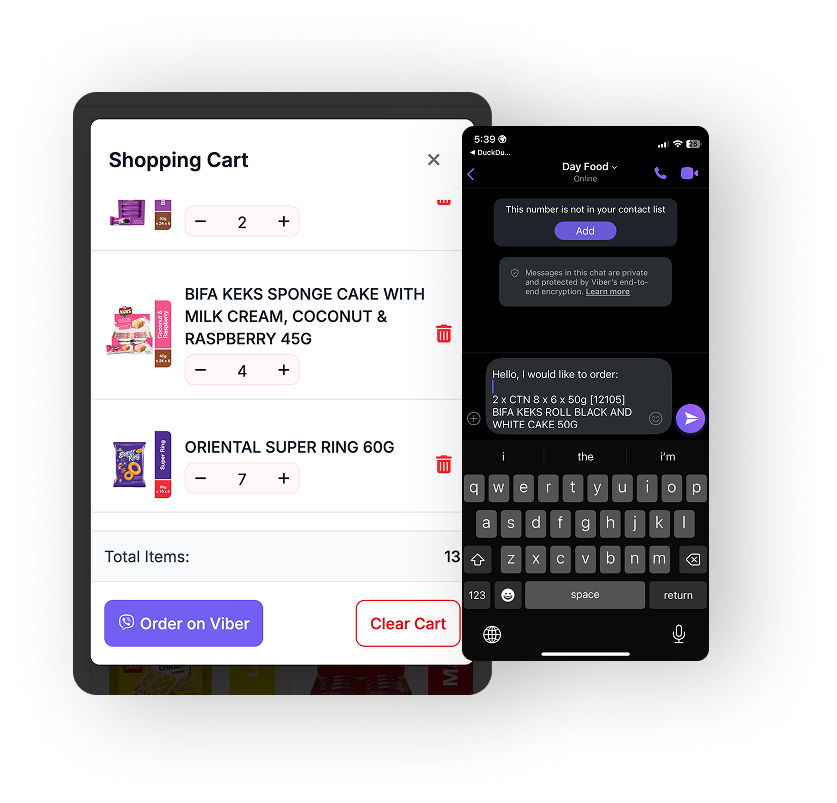
Systems Design
- Rails + Hotwire front-end on Spree Commerce domain
- PostgreSQL as system of record
- Viber deep link with encoded cart lines and customer info
- PWA service worker for cache-first assets
Information Design
- Catalog hierarchy: Category → Brand → Product
- Search by product and brand with filters
- Quote schema: header → lines → totals → contact
- Future: variants & UOM enrich line items
UX Patterns
- Sticky header with search and cart
- Infinite scroll for product browsing
- Quick add from catalog and product detail
- Slide‑in cart review before checkout
Architecture Diagram
flowchart LR
User["Customer (Mobile)"] --> UI["Rails + Hotwire UI"]
UI --> Spree["Spree Commerce Domain"]
Spree --> DB[("PostgreSQL")]
UI -.-> Viber["Viber Deep Link\n(prefilled quote)"]
Viber --> Sales["Sales (Human-in-the-loop)"]
Sales -->|confirm| Odoo[("Odoo ERP")]
Odoo -->|sync status| UI
UI --> SW["Service Worker\n(cache-first)"]
SW --> CDN["Static Assets"]
Information Architecture Map
flowchart TD Catalog["Catalog"] --> Category["Category"] Category --> Brand["Brand"] Brand --> Product["Product"] Product --> Line["Quote Line"] Line --> Qty["Quantity"] Line --> UOM["Unit of Measure (future)"] Line --> Variant["Variant (future)"] Quote["Quote Message"] --> Header["Header"] Quote --> Totals["Totals"] Quote --> Contact["Contact"]
5. Experience Flows
Search & Filter
- Typeahead by product and brand
- Category filters reduce scanning
Build Quote
- Adjust quantities in-line on card or detail
- Cart summarizes lines for review
Checkout to Viber
- Compose message → open Viber → one-tap send
- Fallbacks: copy-to-clipboard/email if Viber unavailable
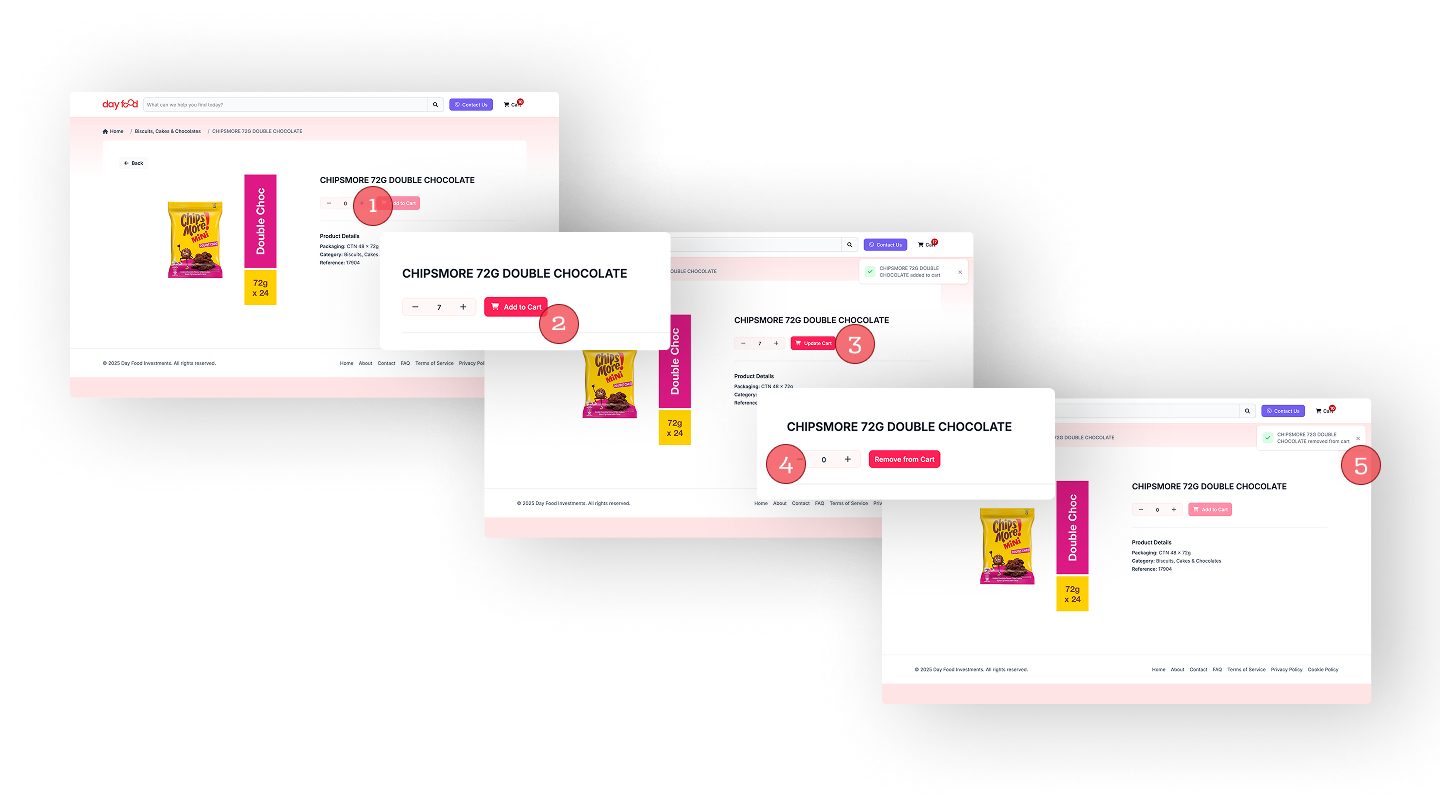
6. Delivery & Project Management
- Phases: Discovery → MVP (quote-to-Viber) → Variants/UOM → Odoo order automation
- Risks: connectivity, Viber dependency, ERP timing; Mitigations: offline-first UI, fallbacks, staged integration
- Collaboration: weekly stakeholder reviews; sales feedback in the loop
gantt title Day Food Catalogue Project Timeline dateFormat YYYY-MM-DD axisFormat %b %Y todayMarker stroke-width:5px,stroke:#0dcaf0,opacity:0.5 section Phase 1: MVP Discovery & Research :done, disc, 2025-01-15, 30d Design & Prototyping :done, design, after disc, 45d MVP Development :done, dev1, after design, 60d Quote-to-Viber Launch :done, milestone, after dev1, 0d section Phase 2 Variants & UOM :active, var, 2025-07-01, 45d Odoo Integration :odoo, after var, 60d PWA Enhancements :pwa, 2025-07-15, 90d section Phase 3 Hotwire Native Planning :plan, 2025-10-01, 30d Native App Development :native, after plan, 90d section Risk Mitigation Offline-first UI :crit, risk1, 2025-03-01, 120d Viber Fallbacks :crit, risk2, 2025-04-15, 45d Staged ERP Integration :crit, risk3, 2025-08-01, 90d
flowchart TD subgraph PM["Project Management"] Weekly["Weekly Stakeholder Reviews"] Feedback["Sales Feedback Loop"] Agile["Agile Development Cycles"] end subgraph Risks["Key Risks"] R1["Connectivity Issues"] R2["Viber Dependency"] R3["ERP Integration Timing"] end subgraph Mitigations["Risk Mitigations"] M1["Offline-first UI Design"] M2["Alternative Checkout Fallbacks"] M3["Staged Integration Approach"] end R1 --> M1 R2 --> M2 R3 --> M3 PM --> Risks PM --> Mitigations classDef riskClass fill:#f8d7da,stroke:#dc3545,stroke-width:1px classDef mitigationClass fill:#d1e7dd,stroke:#198754,stroke-width:1px classDef pmClass fill:#e3f2fd,stroke:#0d6efd,stroke-width:1px class R1,R2,R3 riskClass class M1,M2,M3 mitigationClass class Weekly,Feedback,Agile pmClass
7. Outcomes & Validation
- Metrics: time-to-order, quote completion rate, Viber checkout adoption
- Validation Plan: staged rollout, sales feedback loops, instrumented events
- Status: MVP delivering quote-to-Viber; upcoming: variants/UOM, Odoo automation
Early Adoption Feedback
Although the catalogue has not been officially publicised yet, Day Food reports that customers have already been using it for product reference before walking in or contacting sales to place orders. This organic discovery and usage validates the catalogue's value as a product reference tool even before the full checkout flow is widely adopted.
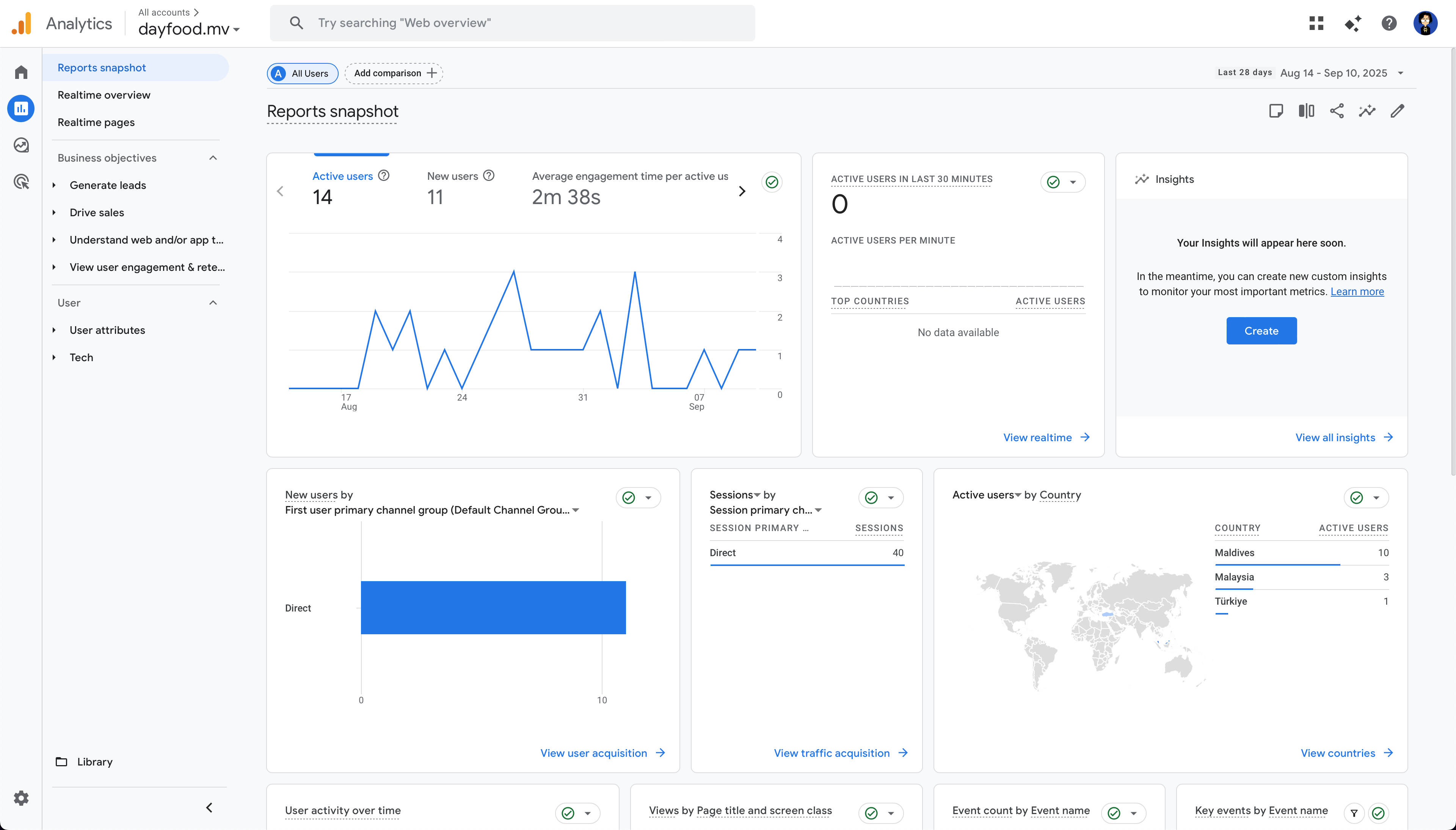
8. Showcase
Search and Filter Experience
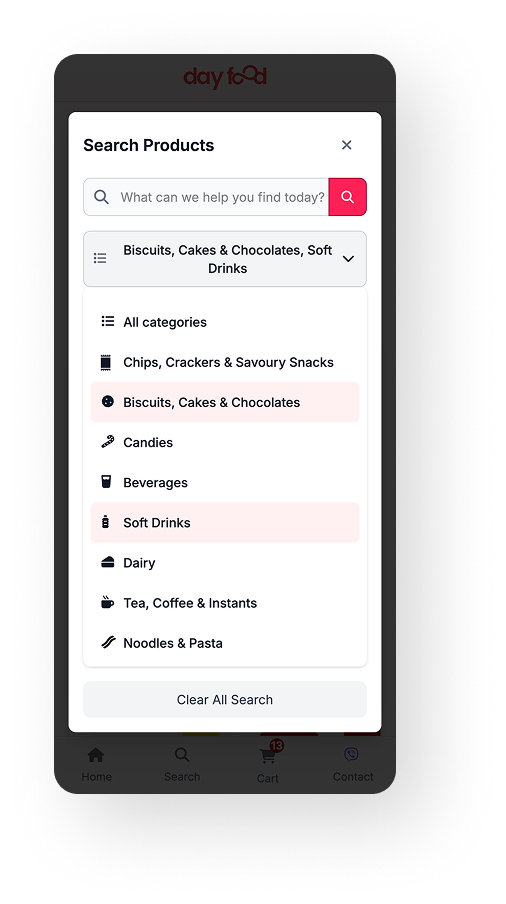
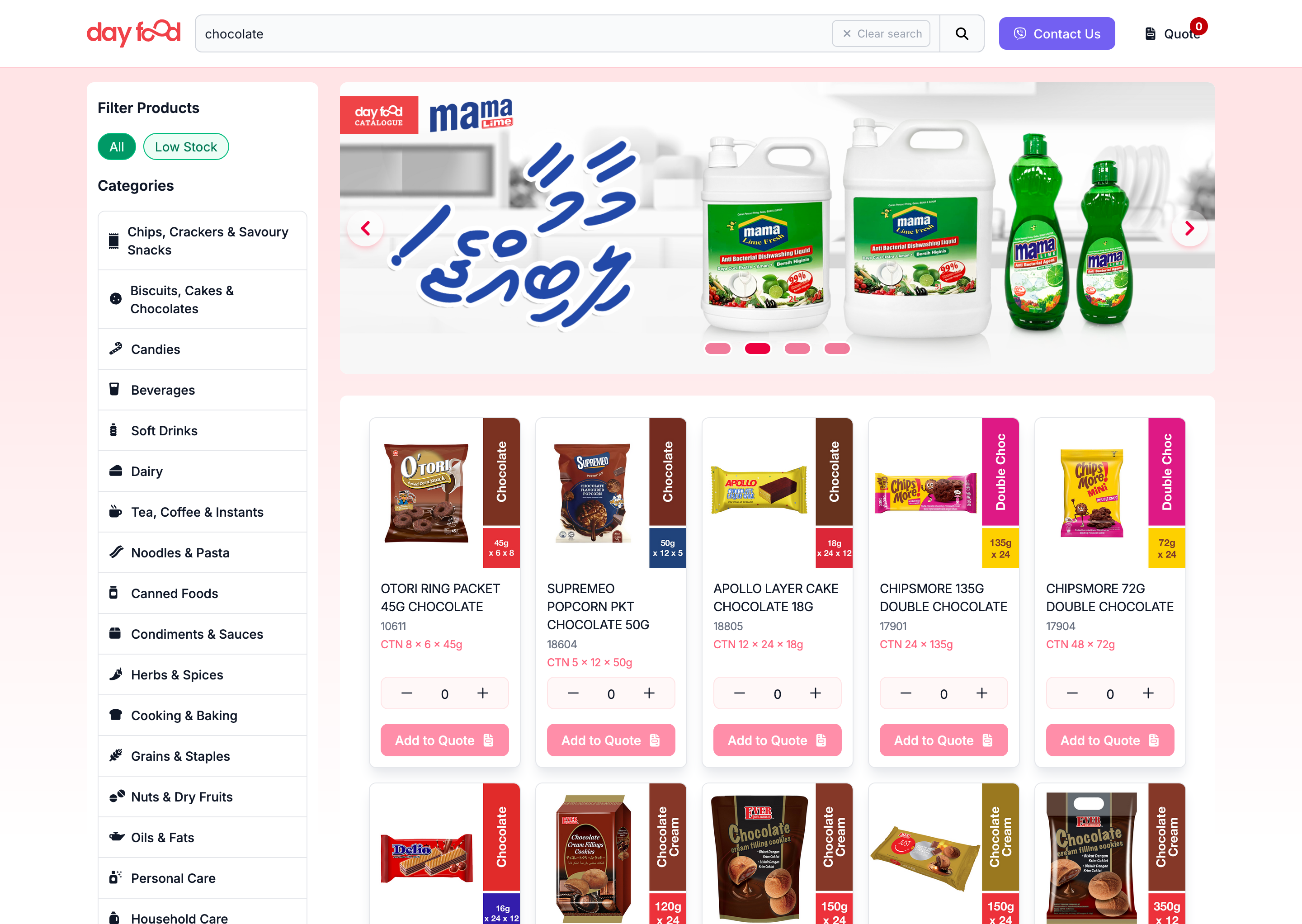
Search Functionality
Customers can search by brand and/or product name to quickly find matches. The search system includes fuzzy matching to handle common spelling variations and typos.
Category Navigation
Pre-defined product categories help customers find options or related products quickly. The hierarchical structure allows for intuitive navigation through 12 main categories and over 40 subcategories.
Product Management & Checkout
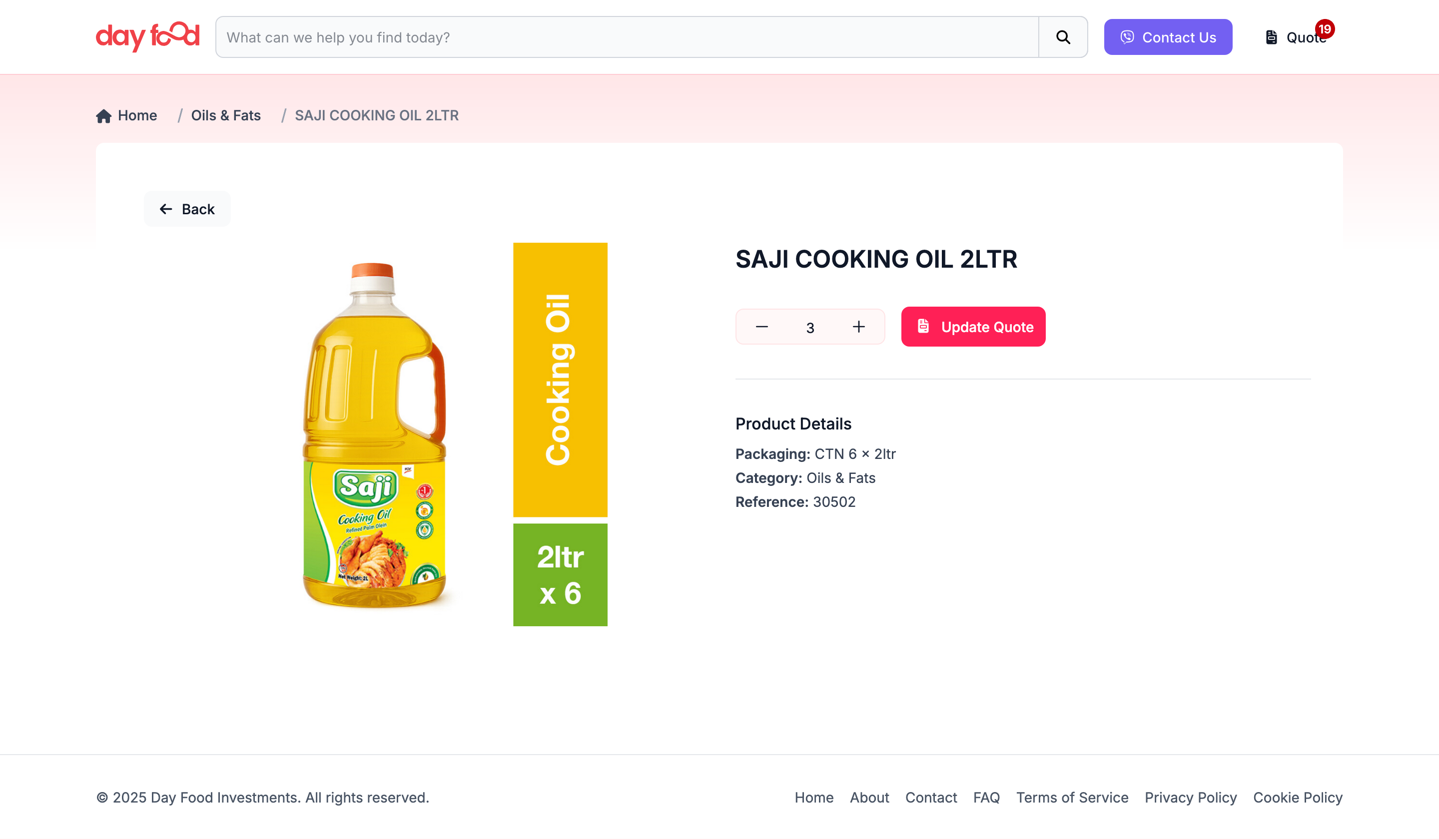
Quote (Cart) Management
Dynamic product buttons clearly state the actions that customers are about to perform. The intuitive interface allows users to add, remove, and adjust quantities with minimal effort.

Add to Quote Flow:
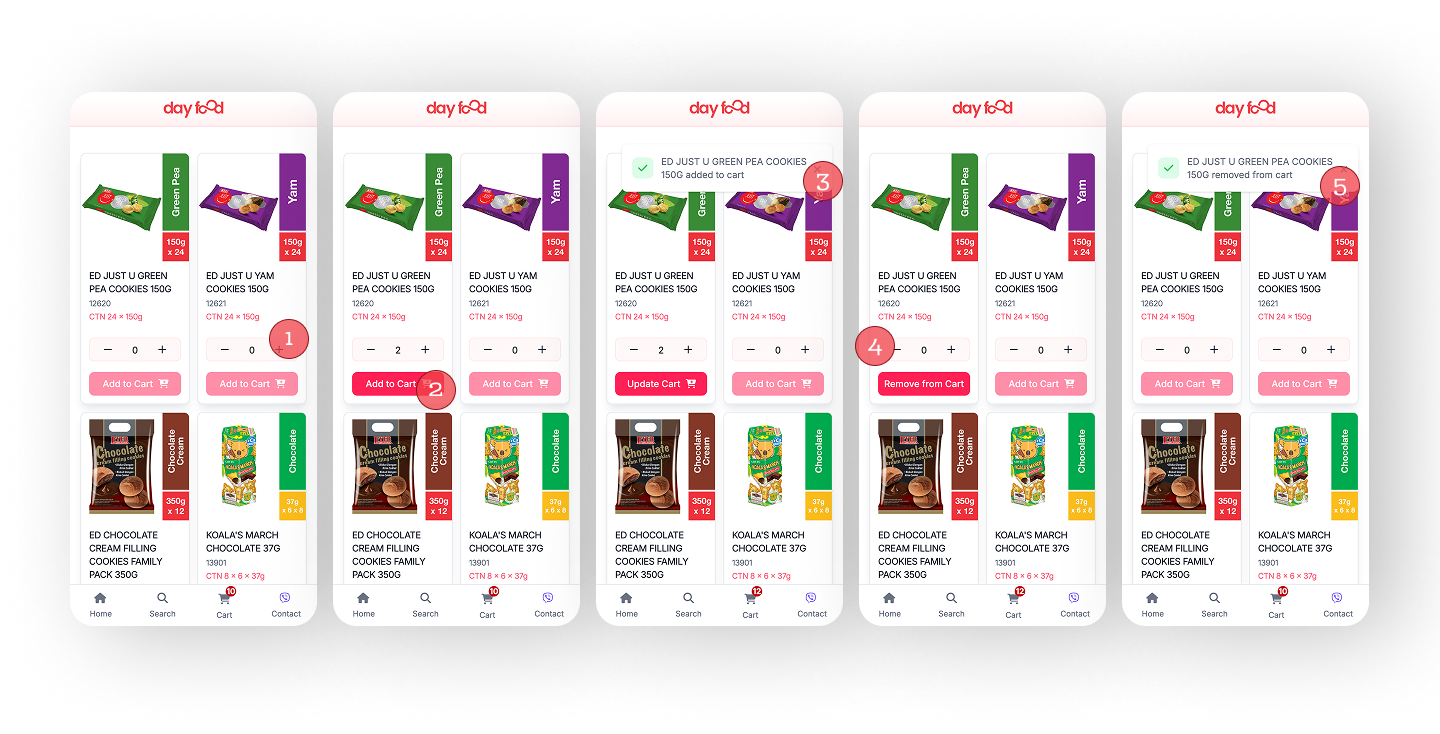
Sketches and Low-Fi Mockups
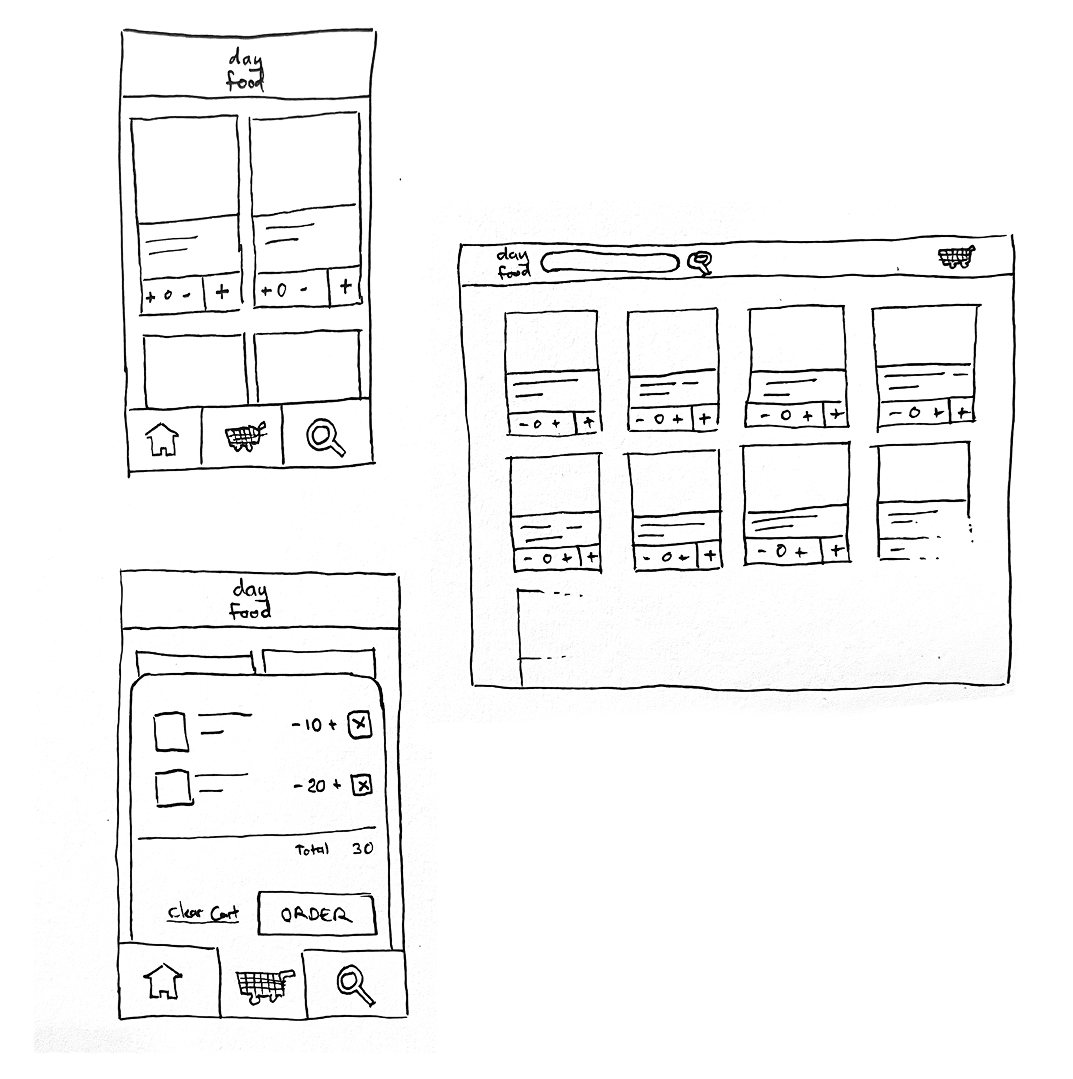
Work in progress artifacts
These artifacts document the progress and decisions made during the project.
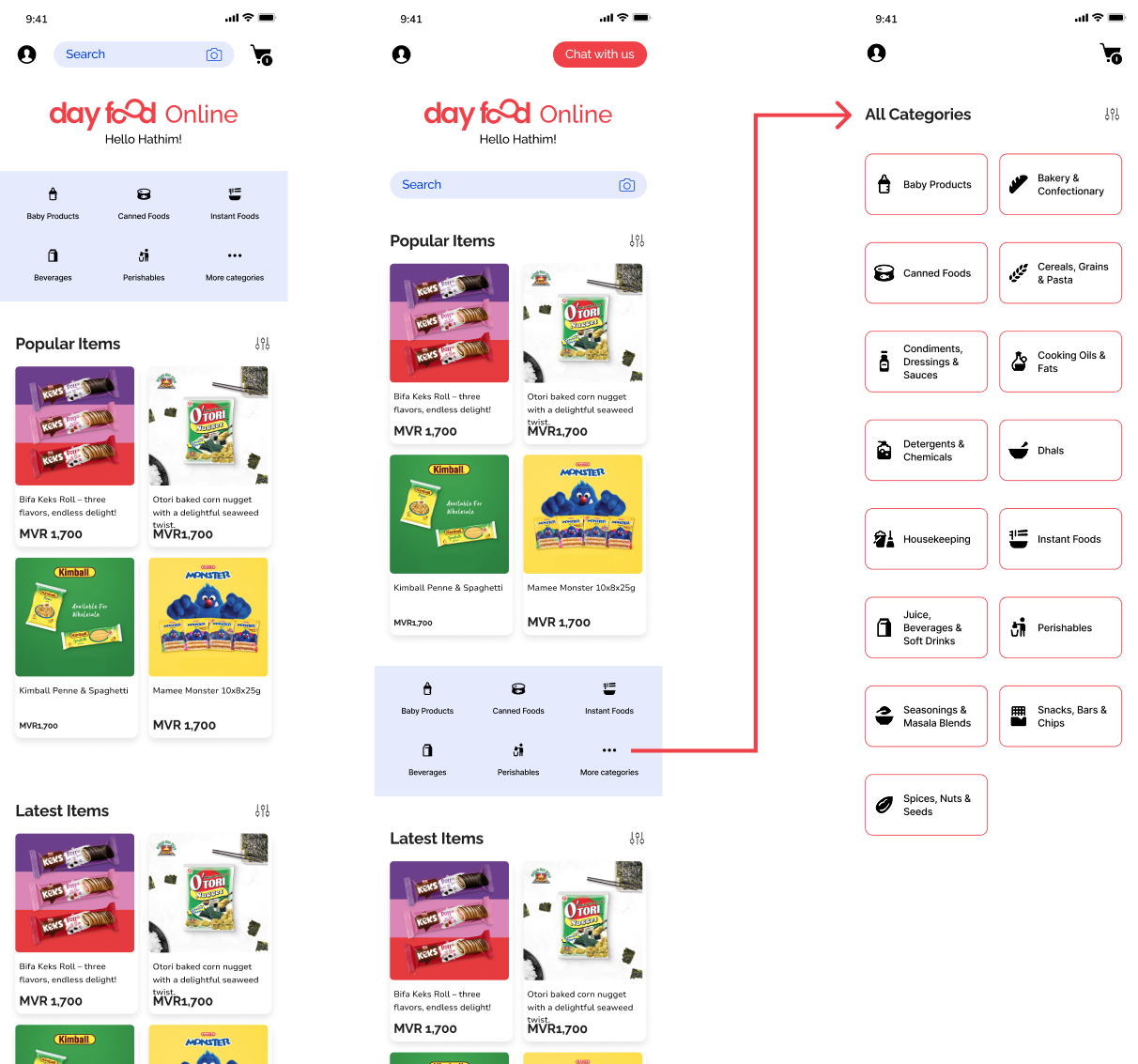
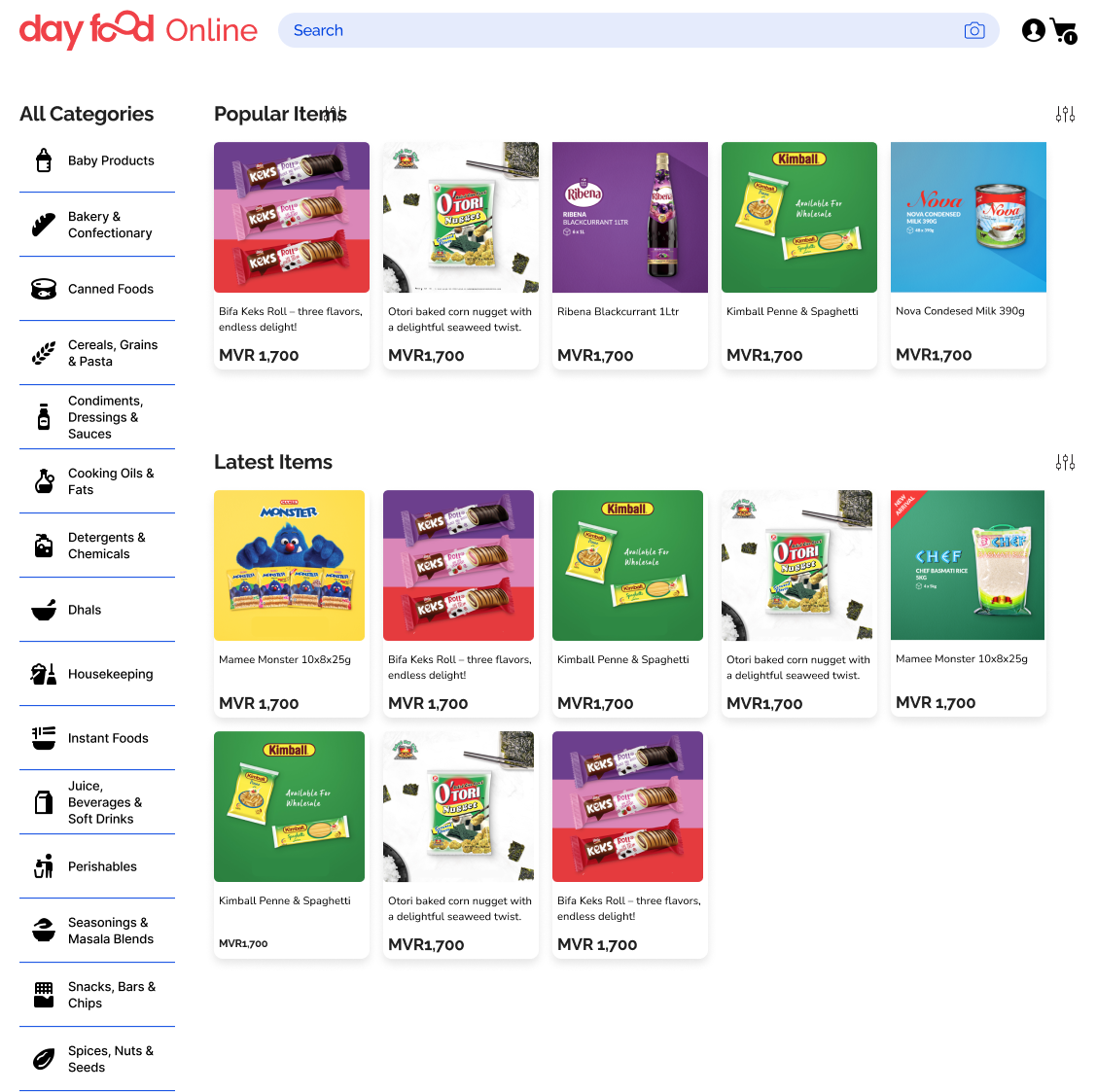
9. Moving Forward
Phase 2: Core Enhancements
Variants & UOM
- Select variant options in product and cart
- Unit-of-measure selection impacts quantities
- Accurate totals in the composed quote
Odoo Automation
- Create Odoo order upon Viber confirmation
- Sync order status back to sales
- Retry and reconciliation for failures
PWA & Reorders
- Full offline product browsing
- Save and reuse previous orders
- Improved app-like experience
Native App Planning
- Evaluate Hotwire Native approach
- Push notifications for order updates
- Offline-first architecture
10. Appendix: Technical Notes
PWA & Offline
- Service Worker with cache-first strategy for static assets
- Graceful degradation for flaky connectivity
- Install prompt for regular buyers
Performance & Images
- Responsive image variants and lazy loading
- Minimal blocking JS via Hotwire (Turbo/Stimulus)
- DB indexes for product and taxonomy lookups
Security
- CSRF protection and secure headers
- Content Security Policy (CSP)
- Input validation for deep-link payloads
Viber Deep Link
- Encoded cart lines: product, qty, unit, brand
- Fallback to copy-to-clipboard/email if Viber unavailable
- Message schema aligns with sales processing
Tech Stack
- Ruby on Rails 7 with Hotwire
- PostgreSQL for persistence
- Spree Commerce for catalog management
Deployment
- Containerized with Docker
- CI/CD pipeline with GitHub Actions
- Hosted on Digital Ocean with CDN
sequenceDiagram autonumber participant C as Customer (Mobile) participant UI as Rails + Hotwire UI participant SP as Spree Commerce participant DB as PostgreSQL participant VB as Viber participant S as Sales participant OD as Odoo ERP C->>UI: Browse catalog UI->>SP: Get products SP->>DB: Query products DB-->>SP: Return products SP-->>UI: Products data UI-->>C: Display products C->>UI: Add to quote UI->>UI: Update cart C->>UI: Checkout to Viber UI->>VB: Open Viber with quote VB->>S: Send quote message VB->>S: Message delivered S-->>C: Confirm details S->>OD: Create order (planned) OD-->>UI: Status sync (planned) UI-->>C: Status update
Integration Architecture
The sequence diagram above illustrates the core flow from browsing to order placement. The architecture is designed to be resilient to connectivity issues while maintaining a human-in-the-loop for order confirmation and pricing.
Conclusion
The Day Food Catalogue demonstrates how modern web technologies can be leveraged to create a performant, accessible, and user-friendly product showcase. The combination of Ruby on Rails, Hotwire, and PostgreSQL provides a solid foundation that balances developer productivity with application performance.